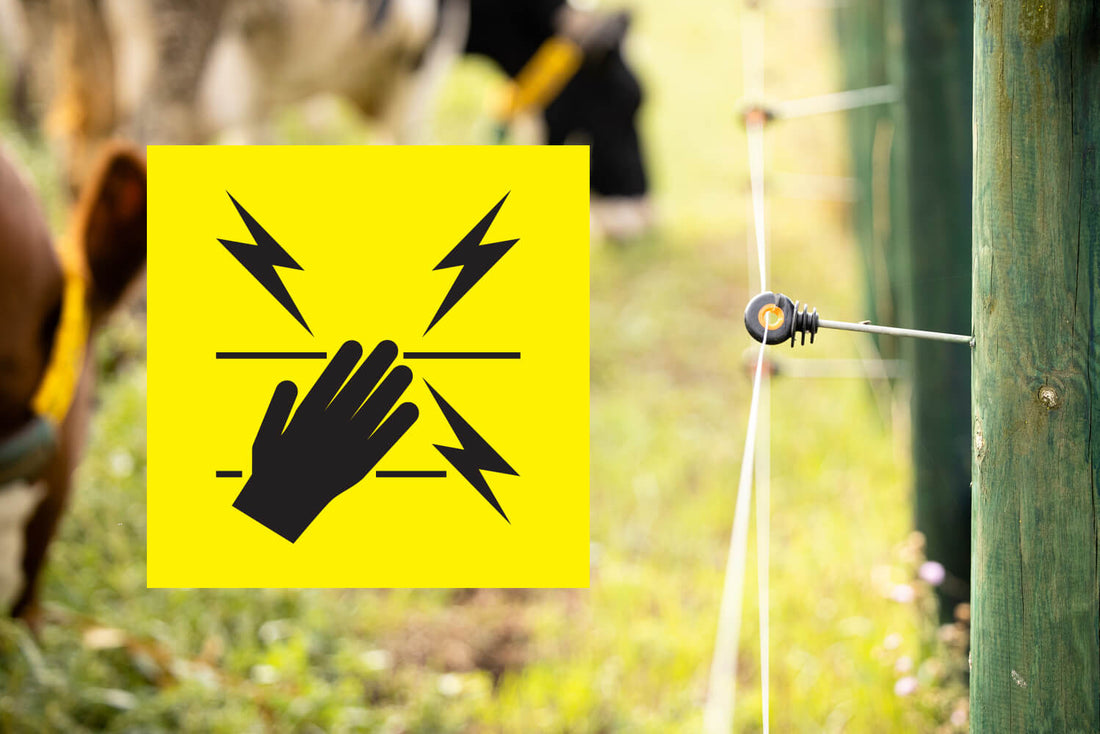on July 19, 2025

Electric fencing is a safe, effective, and widely used method for containing animals and securing land in the UK. Whether you're a smallholder, hobby farmer, horse owner, or land manager, understanding the laws and regulations around electric fencing is essential for staying compliant and protecting animals, people, and property.
This guide covers everything you need to know about electric fencing and UK law, including:
- What the law says about electric fences
- Maximum voltage and power output
- Warning sign requirements
- Installation near public footpaths and roads
- Safety around animals and people
- Maintenance and liability considerations
- Best practice tips
Introduction: Why You Must Know the Law
Electric fences are governed by specific UK legislation designed to ensure they are used safely and responsibly. Misuse or negligence can lead to serious injuries, fines, or legal claims - so it's crucial to get it right. This blog is designed to give landowners, farmers, and animal keepers a clear understanding of UK law, combining information from the relevant standards and guidance, including:
- The Electrical Equipment (Safety) Regulations 2016
- The BS EN 60335-2-76:2015+A2:2021 standard (for electric fence energisers)
- The Highways Act 1980
- Health and Safety Executive (HSE) guidance
- The Animal Welfare Act 2006
Is Electric Fencing Legal in the UK?
Yes. Electric fencing is completely legal in the UK, provided it is installed and operated in accordance with safety guidelines and relevant regulations. The key UK standard covering electric fencing is BS EN 60335-2-76, which outlines technical and safety requirements for energisers and installations. Compliance with this standard ensures fences do not pose a risk to humans, animals, or the public.
What Voltage Is Allowed for Electric Fencing?
UK law permits a maximum output voltage of 10,000 volts for electric fences. All energisers sold in the UK must comply with this limit. However, the voltage alone does not determine the strength of the shock. The output energy, measured in joules (J), and pulse duration also influence the effect. Electric fences deliver short, safe pulses designed to deter rather than harm animals or people.
Do I Need Warning Signs?
Yes, warning signs are required when electric fences are installed in areas accessible to the public.
The law requires:
- Signs every 50 metres (approx.) along boundaries next to public footpaths, roads, or rights of way
- Signs to be clearly visible on both sides of the fence
- Use of yellow signs marked with a black lightning bolt symbol and the word “Warning” or “Electric Fence”
- Signs placed at eye level (typically 1 - 1.5 metres from the ground). Failure to display proper signage could result in claims or liability if someone is injured.
What Are the Rules for Installing Electric Fences?
Installation must comply with safety regulations and best practices. Key points include:
- Public footpaths and roads: Fences must not obstruct or cause danger to users. Avoid placing electric fencing directly on a path. Use clear separation and signage.
- Roadside installations: The Highways Act 1980 prohibits barbed wire or electric fencing that may injure highway users. Consult your local authority before installing near roads.
- Proximity to other fences: Maintain clearance between electric and conventional fences, particularly metal ones, to avoid arcing or interference.
- Earthing: Ensure adequate earthing using galvanised earth stakes (typically 1–3 stakes depending on fence size). Poor earthing can lead to malfunction or electric shocks.
- Safe energisers: Only use CE-marked energisers that conform to BS EN 60335-2-76. Avoid DIY or homemade devices.
Animal Welfare and Electric Fencing
Electric fencing must comply with the Animal Welfare Act 2006, which states that animals must be protected from unnecessary suffering.
- Ensure fence voltage and pulse are suitable for the species you’re containing
- Do not use electric fencing in confined spaces or to punish animals
- Never allow animals to become trapped in electric fences
- Regularly check that fences are working and not causing distress or injury
Responsibilities and Liability
As the fence owner, you are responsible for:
- Ensuring correct installation
- Maintaining the fence
- Protecting the public from accidental contact
- Preventing harm to animals
Failure to do so can lead to civil liability or criminal prosecution, particularly if your fence causes injury to a person or another animal.
Best Practice Checklist
To ensure your electric fence is safe and legal, follow these key tips:
✅ Use a certified energiser compliant with UK standards
✅ Install clear warning signs where the public may encounter the fence
✅ Keep electric fencing off public rights of way
✅ Use suitable earthing for reliable performance
✅ Inspect and test your fence regularly
✅ Avoid using electric fencing as a primary barrier on public boundaries
✅ Never connect electric fencing directly to the mains without an energiser
✅ Consider training animals to respect electric fences
Final Thoughts
Electric fencing is a powerful tool for protecting land and animals, but with power comes responsibility. By following the law and best practice guidelines, you can use electric fencing confidently, safely, and legally.
Looking for the right energiser or advice on electric fencing? Contact AgriSecure - we’ll help you find the perfect solution.
